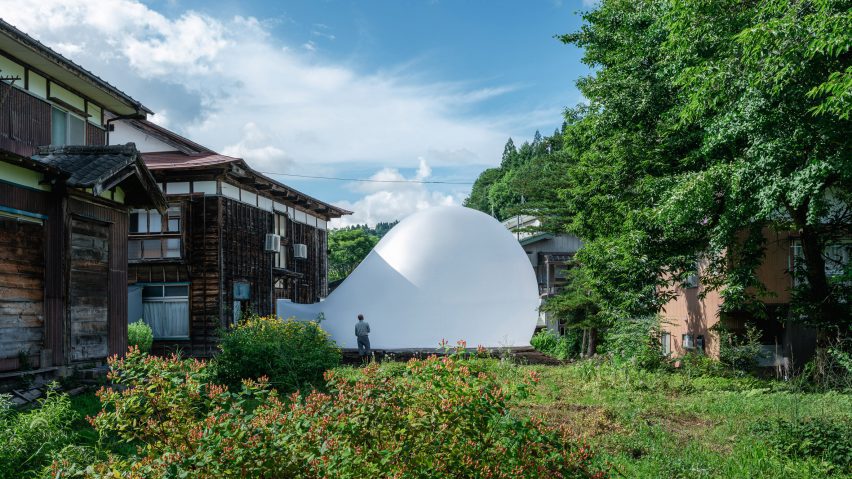Architecture studio MAD has created Ephemeral Bubble, an installation designed to resemble a bubble being blown by a century-old wooden house, for the Echigo-Tsumari Art Triennale in Japan.
Located in the Murono Village in the Japanese countryside, the installation was made of a PVC membrane and forms part of the old house named China House Huayuan, which is used to showcase Chinese art and culture.
MAD designed the Ephemeral Bubble for the Echigo-Tsumari Art Triennale to open "a dialogue with the ancient Japanese countryside", the studio said.
"This design adds a temporary, flexible space that mimics the lightness and translucence of breathing air," it added.
The giant bubble is attached to the house and then rises and expands to form a space that can be used for performances or ceremonies.
Its "biomorphic" design was informed by nature, MAD said, adding that it also hoped the installation would encourage spiritual exploration.
"This concept of bubbles also introduces a playful and interactive space, making the experiential installation ideal for emotive and spiritual exploration," MAD said.
"This approach emphasizes the importance of engagement in design."
Inside the bubble, which is lit up in the evenings to create a lantern-like effect, visitors can see out through blurred walls, through which the colours and shapes of the countryside are only partly visible.
This was done to create an atmosphere of "soft light," according to the studio, which is led by architect Ma Yansong and has previously designed the Tunnel of Light installation for the triennale.
The Ephemeral Bubble was designed to look like it was created by the house itself.
"Picture our century-old house drifting off to sleep, gently blowing bubbles as it dreams," Yansong told Dezeen.
The studio also aimed for the installation to update the historic wooden house.
"This fusion of virtual and tangible elements, combining the old and the new, brings new life into the ancient building," MAD concluded.
Other recent projects by MAD include a "clover-like" conference centre in Beijing that has an undulating roof and the studio's first-ever train station.
The firm has previously worked on a number of art installations, including a maze-like performance space for a Chinese festival and an installation made from multicoloured fishing nets.
The photography is by Zhu Yumeng and Osamu Nakamura.
Project credits:
Architect: MAD
Design team: Ma Yansong, Yosuke Hayano, Dang Qun, Yu Nagasaki, Rozita Kashirtseva, Valentina Olivieri, Hu Jing-Chang
Contractors: Green Sigma Co Ltd, Adachi Zoukeisha

